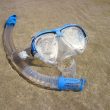Frac pumps work hard under pressure and a few steady habits separate uptime from costly downtime. Routine attention prevents small faults from growing into full blown failures and helps crews move on with the job at hand.
Good habits build muscle memory for operators and techs, so problems are found early and fixed fast. Maintaining a well-tuned frac unit ensures the system operates reliably and minimizes unexpected shutdowns.
1. Daily Visual And Functional Checks
A daily walk around the unit is worth its weight in gold and often reveals leaks, loose fasteners or hose chafe before they worsen. Inspect seals, fittings and mounting points while the pump is cold, then run a brief functional test to listen for odd noises and watch for abnormal vibration.
Log any deviations from normal so trends show up over several shifts and small actions can nip big issues in the bud. When an odd sound shows up, swapping notes with the crew on the prior shift often points straight to the source.
During the run cycle, pay attention to pressure traces and stroke counts because these numbers speak louder than words about wear. A drop in efficiency, a sudden spike or a slow drift in readings gives early warning about valves or packing that need attention.
Stop and take a closer look at suspect areas rather than pushing through and risking collateral damage. Quick stops for small fixes usually save hours of tear down and a headache for the whole crew.
2. Filter And Fluid Care
Clean fluid makes all parts live longer so filter checks are not glamorous but they are vital and simple to do. Replace or clean strainer elements on a regular cadence and inspect filter housings for signs of bypass or contamination.
Sampling tank fluid and running a quick lab check on particle counts and water content helps spot upstream issues before they reach the pump. Keep a small cache of common filter sizes on the truck and rotating items back into stock after service to avoid long waits.
Fluid compatibility matters and using the wrong blend can speed wear in valves and seals faster than you expect. Match fluid properties to pump specs and track any additives that get introduced at the well site.
If abrasive solids are in play, bump up filter maintenance and check downstream components more often. A steady regime of sampling and filtering makes routine maintenance feel like childs play compared with an emergency teardown.
3. Fluid End And Valve Care

The fluid end takes the brunt of abuse so inspect seat and ball assemblies on a regular schedule before performance slips. Check valve stability and seating, and measure for common wear patterns that predict when a rebuild will be needed.
Keep measurements and vendor specs handy so the tech who does the work knows when parts cross the wear threshold. When a valve is marginal, swap it out rather than testing fate because small failures can cascade quickly.
Cleaning the fluid end between jobs prevents scale and grit from setting up camp in tight places where it will do damage over time. A thorough flush and visual check after heavy use removes trapped debris that will otherwise grind down metal and seals.
Use the right cleaning agents and respect manufacturer torque specs when reassembling to avoid introducing new problems. A tidy fluid end with good parts and solid seals will run like a well oiled machine for longer stretches.
4. Lubrication And Drive Maintenance
Lubrication is low drama but high payoff, so stick to a schedule and to the right grease or oil grade for bearings and gearboxes. Top off levels before a long run and change oil on the interval that suits hours and operating conditions rather than waiting for a smell or smoke.
Check pump drive alignment and the coupling condition because a misaligned drive amplifies wear in bearings and seals. Vibration checks, even a simple handheld probe, flag issues that a visual check might miss.
Belts and pulleys deserve attention too because a failed drive part stops more than the pump and costs loads of time to recover. Tighten and set belt tension per the manual and replace showings of cracking or glazing.
Grease points are small, frequent victories that keep the rest of the system calm and cooperative. When routine oil and grease care becomes habit, unscheduled failures drop and the crew can focus on other tasks.
5. Scheduled Parts Replacement And Record Keeping
Parts fail in a predictable way when usage and wear are tracked, so adopt a schedule for replacing items that have a known life span. Swap out seals, packing, and wear plates before they cross the line into failure to avoid the domino effect that a single part can cause.
Keep a list of common spares and a simple inventory rotation so a needed component is on hand at the job site. A modest parts stock saves big delays when time is short and a repair is urgent.
Logs are not paperwork for its own sake, they are the pulse of reliable equipment care and give clarity to what works and what does not. Record service actions, hours, observed anomalies and part swaps so trends become visible and smart choices follow.
Share notes between shifts so the person starting knows exactly what to watch for and what was done. With clear records, repair intervals become predictable and crew confidence rises because surprises are less likely to show up at the worst possible moment.









